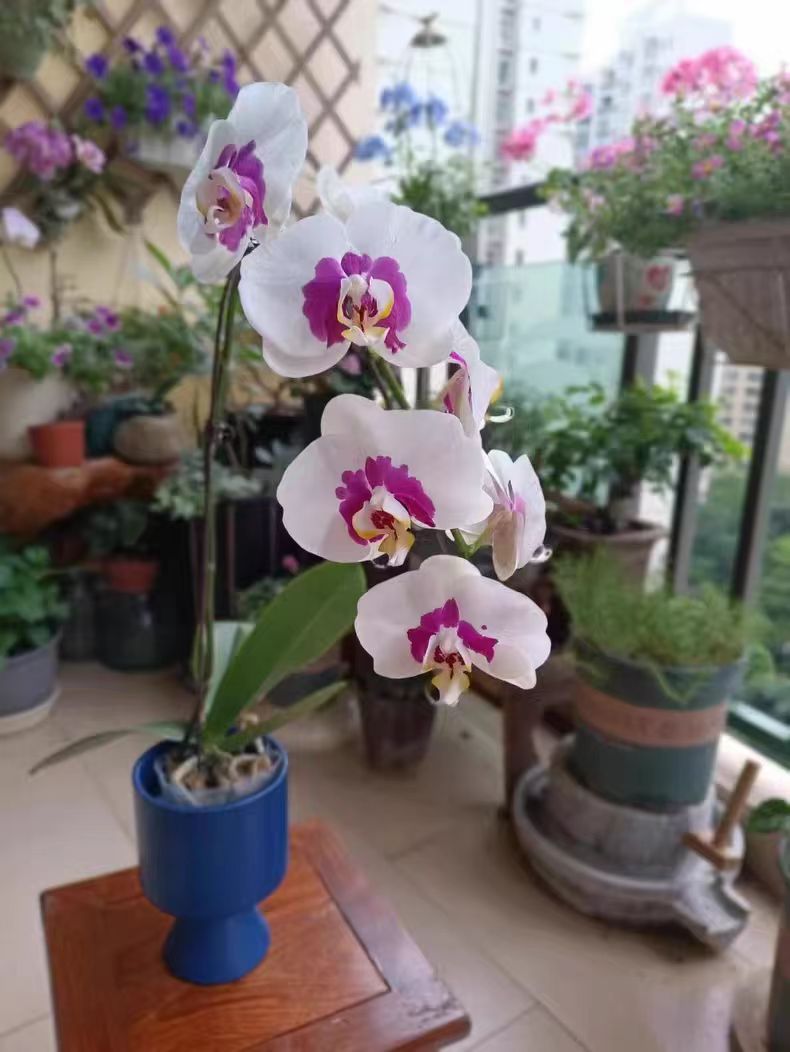When Phalaenopsis orchids bloom, they resemble dancing butterflies, stunning and beautiful. However, after the flowers fade, many orchid growers notice that the plants start to lose leaves or the leaves become soft. These phenomena not only affect the plant's appearance but may also indicate problems in maintenance. Understanding the underlying causes and adopting scientific care measures are essential to help post-flowering Phalaenopsis seedlings regain vitality.
Why do Phalaenopsis post-flowering seedlings lose leaves?
Excessive Nutrient Consumption
The blooming process of Phalaenopsis consumes (large amounts of) nutrients. If nutrients are not replenished promptly after flowering, the plant will mobilize nutrients from the leaves to supply critical parts such as the roots and stems to sustain vital functions, leading to yellowing and shedding of leaves. This leaf-drop phenomenon is more pronounced when the plant has not been fertilized for a long time or has received insufficient fertilizer.
Improper Watering
Both overwatering and underwatering can cause leaf loss. Overwatering keeps the growing medium excessively moist, preventing the roots from breathing properly and leading to root rot. Damaged roots struggle to absorb water and nutrients, causing leaves to fall. Conversely, insufficient watering leaves the plant in a prolonged (water-deficient) state, and the leaves gradually dry out and fall off due to lack of adequate moisture.
Environmental Sudden Changes
Phalaenopsis typically bloom in warm, stable indoor environments. After flowering, if the plant is suddenly moved to an environment with (too low temperature), too strong light, or poor ventilation, it may struggle to adapt, resulting in leaf loss. For example, moving the plant from a warm indoor location to the outdoors suddenly can expose it to low temperatures, disrupting leaf physiological functions.
Pest and Disease Infestations
Post-flowering, the plant's resistance decreases, making it vulnerable to pests and diseases. Pests like spider mites and scale insects suck the sap from leaves, damaging them. Diseases such as leaf spot and anthracnose cause lesions on leaves, which gradually rot and fall off.
How to care for soft leaves in Phalaenopsis post-flowering seedlings?
Reasonable Nutrient Supplementation
Fertilize promptly after flowering to replenish the consumed nutrients. Slow-release fertilizers can be sprinkled on the surface of the growing medium to allow gradual nutrient release. Alternatively, apply a compound fertilizer solution diluted 1000–1500 times every 10–15 days, following the principle of "light fertilizer applied frequently." Additionally, appropriate supplementation of phosphorus and potassium fertilizers helps enhance the plant's resistance and promote new leaf growth.
Adjust Watering Methods
Check the moisture level of the growing medium before watering. Insert your finger 2–3 cm into the medium; if it feels dry, water the plant. If it is still moist, delay watering. When watering, ensure thorough hydration until water flows out of the (pot bottom), but avoid water accumulation. Generally, water every 2–3 days in spring and autumn, daily in summer, and every 5–7 days in winter, adjusting the frequency according to the actual environment.
Optimize the Growing Environment
Maintain the temperature between 15–28°C to avoid sudden temperature changes. Place the plant in a location with sufficient scattered light, avoiding direct (strong light), and ensure 4–6 hours of daily (light). Improve ventilation to keep air circulating, but avoid direct strong winds blowing on the plant, creating a comfortable and stable environment for post-flowering seedlings.
Prevent and Control Pests and Diseases
Regularly inspect the plant. For minor pest infestations, wipe the leaves with a cotton swab dipped in alcohol to remove pests. In severe cases, use specialized insecticides as instructed. For diseases, promptly remove infected leaves and spray the plant and growing medium with diluted fungicides such as carbendazim or thiophanate-methyl every 7–10 days for 2–3 consecutive times.
The loss of leaves and softening of leaves in Phalaenopsis post-flowering seedlings are the plant's "distress signals." Only by accurately identifying the root causes and taking targeted care measures—meticulously nurturing the plant through nutrient, water, environmental, and pest/disease management—can post-flowering seedlings recover health quickly and accumulate strength for the next bloom.
Why do Phalaenopsis post-flowering seedlings lose leaves?

Share with
Tagged in :




Leave a Reply